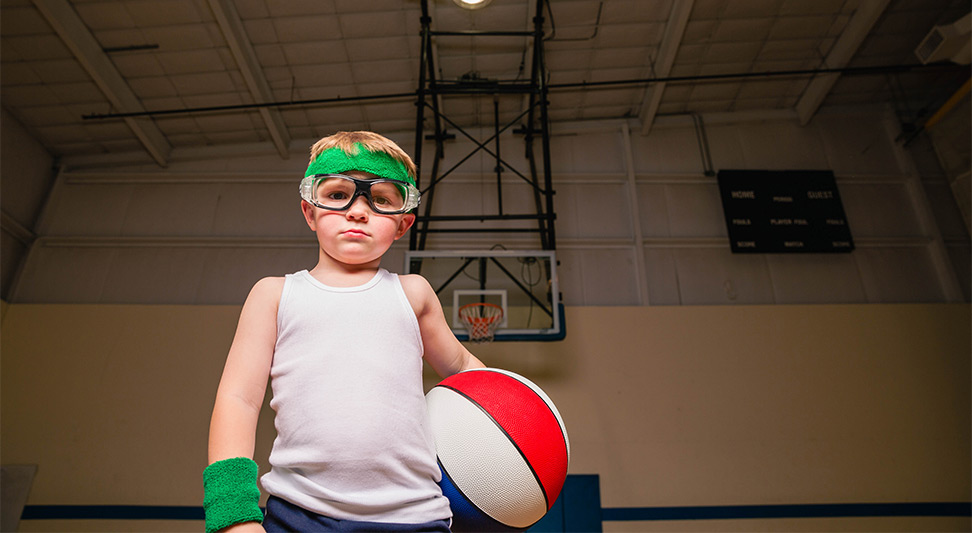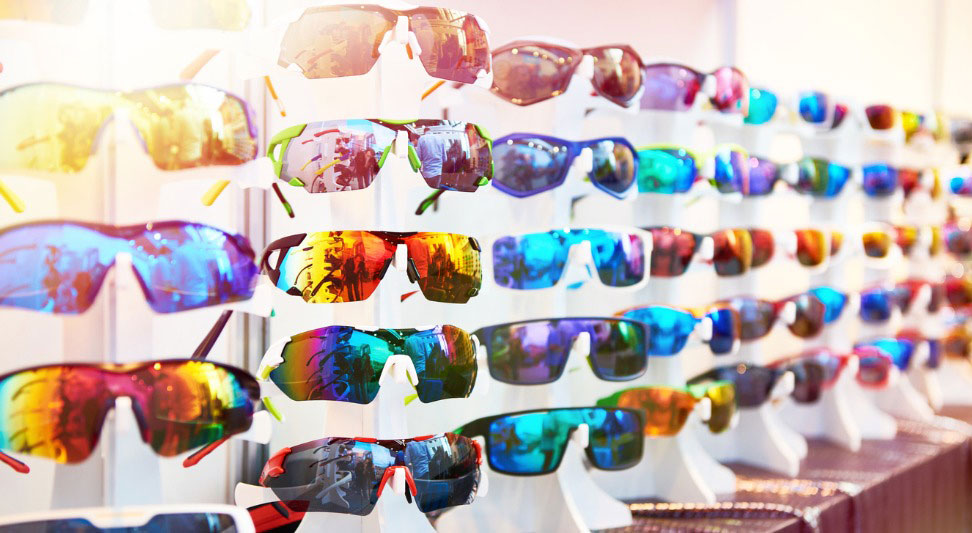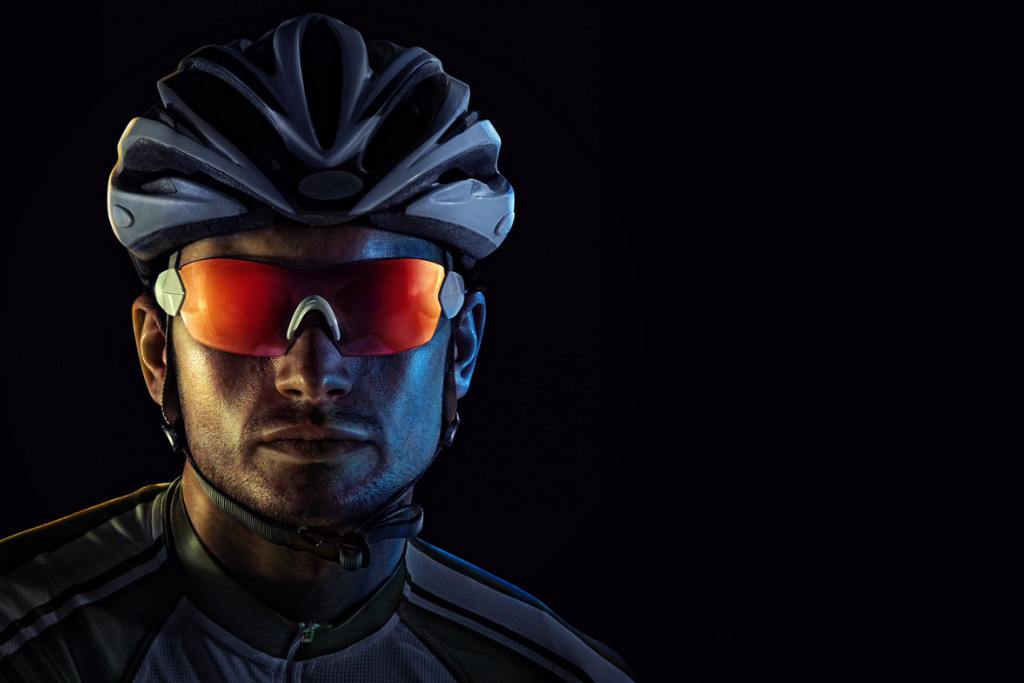Sports and recreational activities are popular pastimes with many mental and physical benefits but can also come with risks. Sports-related eye injuries are not as rare as you might think, and they can seriously impact your vision long-term. This is why the American Academy of Ophthalmology (AAO) recognizes April as Sports Eye Safety Month.
Sports Eye Safety Month aims to raise awareness about sports-related eye injuries, including how to recognize, prevent, and treat them. Whether you’re on a field or a court, you’ll need more than eyeglasses to protect your eyes and preserve your vision. Prevention is key to protecting your eyes from injury, and educating yourself is the first step.
Read on to learn about sports-specific eye protection, common eye injuries, and more so you can enjoy your favorite sports knowing you’re adequately protected.
Sports Eye Injuries Should Be Taken Seriously
Sports eye injuries are not uncommon or exclusive to a few select sports. They’re suffered by thousands of children and adults every year across a wide range of activities. Here are some statistics from Prevent Blindness’s 2021 report to help you understand the prevalence of these injuries:
- In the U.S., there were approximately 26,925 sports-related eye injuries in 2021 alone.
- More than half of these eye injuries (16,299) were sustained by people under the age of 22.
- Children under the age of 6 accounted for 2,879 of these eye injuries.
Of course, the risk of eye injury does vary across sports. This same report found that these activities resulted in the highest number of overall injuries:
- Non-powder guns, darts, arrows, slingshots
- Pool and water sports
- Basketball
- Exercise, weight-lifting
- Bicycling
It should be noted that even low-risk sports on the report resulted in hundreds of eye injuries. These numbers are concerning, in part because so many of these injuries could have been easily avoided. The National Institutes of Health estimates that protective eyewear could prevent as much as 90% of sports-related eye injuries. This is why taking these injuries seriously and learning how to protect yourself is essential.
A Brief History of Sports Eye Protection

The beginning of sports eye protection can be traced back thousands of years. The first major example is the fencing mask used in 1200 B.C., though it has undergone many changes in the centuries since. Other milestones would come centuries later, including:
- The baseball catcher’s mask in 1877
- Goggles for skiing and snowboarding in 1965
- Protective goggles for basketball in 1968
More helmets, visors, and goggles were introduced over the following decades for motor racing, hockey, football, soccer, and other sports. A lot of this gear is now required for those playing professionally. These changes are thanks in part to recommendations from the AAO and the advocacy of current and former athletes, many of whom unfortunately sustained preventable sports-related eye injuries.
How to Prevent Common Sports Eye Injuries
To understand how to prevent common sports eye injuries, it helps to understand the injuries themselves.
- Corneal Abrasions: This common injury is a scratch on the surface of the eyeball. These abrasions usually heal in a few days, but it’s important to see an eye doctor for treatment and to prevent it from getting infected.
- Blunt Eye Trauma: Being hit in the face with a flying object or crashing into another athlete can cause blunt eye trauma. This can result in several injuries that vary in severity. You could experience a black eye, hyphema, traumatic iritis, detached retina, ruptured eyeball, or orbital blowout.
- Penetrating Eye Injuries: These types of injuries are very serious and can cause severe damage to the eye and permanent vision loss. They occur when an object pierces the eye, like flying debris, broken glasses, or another athlete’s gear.
The most effective way to prevent these injuries is by wearing protective eyewear. Please note, regular eyeglasses and sunglasses aren’t considered protective eyewear. You need something durable, highly shatter-resistant, and suited to your sport, and it must fit securely on your face. This could come in the form of safety goggles, visors, faceguards, and more.
Recognizing and Treating Sports Eye Injuries
An eye injury that goes unnoticed can cause even more damage. That’s why you need to know the signs of an injury so you can seek help for yourself or someone else. Here are some of the most common symptoms of an eye injury:
- Difficulty seeing out of the eye
- Ongoing eye pain
- Unusual pupil shape or size
- Blood in the clear part of the eye
- Torn or cut eyelid
- Protruding eyeball
- One eye isn’t moving well
These are all signs of what could be a serious eye injury. If you notice one or more of these signs in yourself, a teammate, or an opponent, you must seek medical help from an eye doctor as soon as possible. While you wait to see an eye doctor, you’ll want to avoid doing anything that could worsen the damage.
If you get hit in the eye, gently apply a cold compress (not a cold or frozen food item). For eye scratches, rinse your eye with clean water or a saline solution. If your eye has been cut or punctured, lightly place a protective shield over it and avoid drugs that could thin the blood.
When dealing with any eye injury, DO NOT rub, touch, or apply pressure to the eye. Your priority should be protecting the eye and immediately going to an ophthalmologist or emergency room.
How To Choose Proper Eyewear for Your Sport

Sports eye guards (also called glasses and goggles) are suitable for a wide variety of sports, including racquet sports, basketball, and soccer. To find a high-quality eye guard that’s suited to you, you’ll want to shop at sports specialty stores or optical stores. You’ll want eye guards that fit you securely while allowing the use of a helmet if that’s relevant to your sport.
To ensure your eye guards are suitable for your sport, you should look to standards set by the American Society for Testing and Materials (ASTM). ASTM has standards for each sport, including skiing, snowboarding, field hockey, paintball, and more. They don’t certify products themselves, but companies can put ASTM codes on their product packaging to demonstrate that their gear meets or exceeds the ASTM’s requirements.
Investing in protective eyewear can save you from a potentially devastating eye injury. By wearing the proper equipment, you can educate and inspire others to do the same and make your sport safer in the process.
If your vision or prescription eyewear needs make it difficult to wear protective eyewear, laser vision correction could be the solution you’re looking for.
Schedule your free OKC LASIK consultation at nJoy Vision today!
(405) 842-6060

